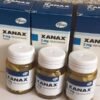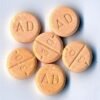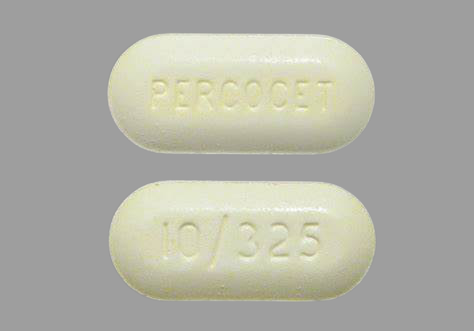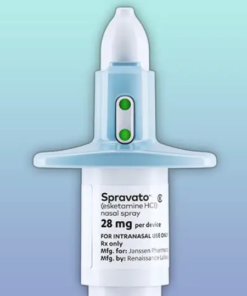buy percocet online for sale
buy percocet online for sale , Percocet Pills (acetaminophen and oxycodone) are a powerful combination prescription medication designed to manage moderate to severe pain. Percocet combines oxycodone, an opioid analgesic, with acetaminophen, a non-opioid pain reliever, to enhance the effectiveness of pain relief. Often prescribed for short-term use after surgeries, injuries, or to alleviate severe chronic pain, Percocet works quickly to provide relief and improve quality of life for individuals suffering from significant discomfort.
As an opioid medication, Percocet can have serious side effects and carries a risk of dependence, misuse, and overdose. It is crucial to follow the prescribed dosage and instructions from a healthcare provider to avoid these risks. Potential side effects may include dizziness, nausea, constipation, and respiratory depression.
Patients are advised to not use Percocet if they have a history of alcohol or drug abuse, respiratory issues, or severe liver impairment. If you or a loved one is prescribed Percocet, make sure to monitor for any adverse reactions and consult with your doctor for proper guidance on use.
Percocet, Percocet pills, prescription pain medication, oxycodone, acetaminophen, opioid pain relief, pain management, severe pain relief, opioid addiction, misuse of Percocet, side effects of Percocet, Percocet dosage.
Percocet: Uses, Properties, and Manufacturing Process
Percocet is a prescription medication that combines two active ingredients: oxycodone and acetaminophen. It is commonly used to manage moderate to severe pain. Below, we’ll break down its uses, properties, and manufacturing process.
1. Uses of Percocet
Percocet is prescribed for managing moderate to severe pain, often in cases such as:
-
Post-surgical pain: After a surgical procedure, Percocet may be used for pain relief.
-
Injury-related pain: It can be used for pain resulting from trauma or injury, such as fractures or sprains.
-
Chronic pain management: In certain cases of chronic conditions like arthritis or back pain, when other pain relievers are not effective.
Due to the combination of oxycodone (an opioid) and acetaminophen (a non-opioid analgesic), Percocet provides effective pain relief by working in two different ways:
-
Oxycodone: Acts on the central nervous system to alter the way the brain and body respond to pain.
-
Acetaminophen: Works by inhibiting the production of prostaglandins, chemicals in the body that cause pain and inflammation.
2. Properties of Percocet
Chemical Properties:
-
Oxycodone (C18H21NO4): A semi-synthetic opioid that binds to opioid receptors in the brain and spinal cord, helping to reduce the sensation of pain.
-
Acetaminophen (C8H9NO2): A non-opioid pain reliever that works by inhibiting enzymes (COX-1 and COX-2) involved in pain and inflammation pathways.
Formulations:
Percocet is available in different formulations, commonly in tablet form. It is often prescribed in doses such as:
-
2.5 mg oxycodone + 325 mg acetaminophen
-
5 mg oxycodone + 325 mg acetaminophen
-
7.5 mg oxycodone + 325 mg acetaminophen
-
10 mg oxycodone + 325 mg acetaminophen
Onset and Duration of Action:
-
Onset: Typically within 30 minutes of ingestion.
-
Peak Effect: Reaches maximum effectiveness in about 1-2 hours.
-
Duration: The effects generally last 4-6 hours, depending on the dosage and individual factors.
3. Manufacturing Process of Percocet
The manufacturing of Percocet involves several steps, including the formulation of the drug, ensuring proper dosing, and packaging for distribution. Below is a general outline of the manufacturing process:
1. Active Ingredient Synthesis:
-
Oxycodone: Oxycodone is synthesized from thebaine, a naturally occurring alkaloid extracted from the opium poppy. The synthesis involves several chemical reactions to produce a semi-synthetic opioid molecule with pain-relieving properties.
-
Acetaminophen: Acetaminophen is synthesized through a chemical reaction known as para-aminophenol acetylation, where p-aminophenol is acetylated using acetic acid or acetyl chloride to form the final acetaminophen molecule.
2. Formulation of the Tablet:
-
The correct amounts of oxycodone and acetaminophen are mixed together along with excipients (inactive ingredients) that aid in the stability, binding, and disintegration of the tablet. These can include:
-
Binders (e.g., cellulose, starch) to hold the ingredients together.
-
Fillers (e.g., lactose, microcrystalline cellulose) to add bulk to the tablet.
-
Disintegrants (e.g., croscarmellose sodium) that help the tablet break down in the digestive tract.
-
Coatings for ease of swallowing and to protect the active ingredients from degradation.
-
3. Compression and Shaping:
-
Once the active ingredients and excipients are mixed, the mixture is compressed into tablet form using a tablet press. The tablets are typically of uniform size, color, and weight.
-
The tablets are then coated (if necessary) to prevent degradation from moisture, enhance appearance, and mask any unpleasant taste.
4. Quality Control and Testing:
-
Testing for Dosage Accuracy: The finished tablets undergo testing to ensure that each tablet contains the correct amount of active ingredients (oxycodone and acetaminophen).
-
Stability Testing: This checks the shelf life of the tablets to ensure they remain effective throughout their expiration period.
-
Dissolution Testing: Ensures that the tablet dissolves at the correct rate in the digestive system for proper absorption.
-
Safety and Purity Testing: Checks for the presence of contaminants and confirms that the product is free from harmful substances.
5. Packaging:
-
After passing quality control, the tablets are packaged into bottles or blister packs, labeled with dosage instructions, and prepared for distribution. Each package includes clear labeling regarding the risks of opioid use, potential side effects, and storage instructions.
4. Regulation and Controlled Substance Classification
Because Percocet contains oxycodone, it is classified as a Schedule II controlled substance in many countries, including the U.S. This classification reflects the drug’s potential for abuse, addiction, and overdose. Prescriptions for Percocet are tightly regulated, and refills are typically not allowed without a new prescription from a licensed healthcare provider.
Conclusion
Percocet is an effective pain reliever combining the opioid oxycodone and the non-opioid analgesic acetaminophen. While it is highly effective for managing moderate to severe pain, it carries the risk of dependence and side effects due to the opioid component. Its manufacturing process involves the synthesis of the active ingredients, followed by formulation into tablets and rigorous quality control to ensure safe and effective use.
1. Follow Your Doctor’s Instructions
-
Dosage: Always take the prescribed dose and do not exceed the amount your doctor has recommended. The usual adult dose typically ranges from 5 mg to 10 mg of oxycodone combined with 325 mg of acetaminophen every 4 to 6 hours, depending on the severity of pain.
-
Frequency: Do not take more than 1 tablet every 4-6 hours as needed for pain. Never take more than 4,000 mg of acetaminophen in 24 hours to avoid liver damage.
-
Refills: If you are prescribed Percocet for ongoing pain, ask your doctor about the best course of action. Refills may not be allowed due to its controlled substance status, and your doctor will need to assess your pain management needs periodically.
2. Take Percocet with or without Food
-
You can take Percocet with or without food. Taking it with food may help reduce stomach upset or nausea, which is a common side effect.
-
Take with a full glass of water to help the pill dissolve properly.
3. Swallow the Tablet Whole
-
Do not crush, break, chew, or dissolve the tablet, as this can release all of the drug at once, increasing the risk of overdose. The tablet is formulated to release the medication over time.
-
If you have difficulty swallowing pills, talk to your doctor or pharmacist. They may be able to provide you with an alternative or recommend a different form of the medication.
4. Never Mix with Alcohol or Other Sedatives
-
Avoid alcohol while taking Percocet, as combining alcohol with oxycodone can increase the risk of serious side effects, including respiratory depression, coma, or death.
-
Do not combine Percocet with other sedatives (like benzodiazepines or muscle relaxers) unless specifically instructed by your doctor. Combining these drugs can dangerously increase the risk of sedation, breathing problems, or overdose.
5. Monitor for Side Effects
-
Common side effects of Percocet include drowsiness, dizziness, constipation, nausea, and headache. These can be more pronounced at the start of treatment.
-
If you experience severe side effects such as difficulty breathing, slow heart rate, severe dizziness, or confusion, seek medical attention immediately.
6. Missed Dose
-
If you miss a dose of Percocet and it is almost time for your next dose, skip the missed dose and take your next dose at the regular time.
-
Do not take two doses at once to make up for a missed dose, as this can increase the risk of overdose.
7. Disposal of Unused Percocet
-
Do not keep unused Percocet. If you no longer need the medication or have leftover pills, properly dispose of them to avoid misuse or accidental ingestion.
-
Most pharmacies offer medication take-back programs. You can also check the FDA guidelines for safe disposal or use a drug deactivation kit.
8. Withdrawal Symptoms
If you need to stop taking Percocet, do not suddenly stop taking it, especially if you have been using it for a long time. Sudden discontinuation can lead to withdrawal symptoms like:
-
Anxiety
-
Sweating
-
Muscle aches
-
Nausea
-
Insomnia
To safely stop Percocet, your doctor may guide you on tapering the dosage gradually to reduce withdrawal effects.
Key Points to Remember
-
Take Percocet exactly as prescribed.
-
Avoid alcohol and other sedatives while using Percocet.
-
Do not crush or chew the tablet.
-
Take with food if needed to avoid stomach upset.
-
Discard any unused medication safely to prevent misuse.
If you have any doubts or concerns about how to use Percocet, talk to your healthcare provider or pharmacist. They can provide further guidance and address any potential risks or interactions specific to your situation.
















Reviews
There are no reviews yet.